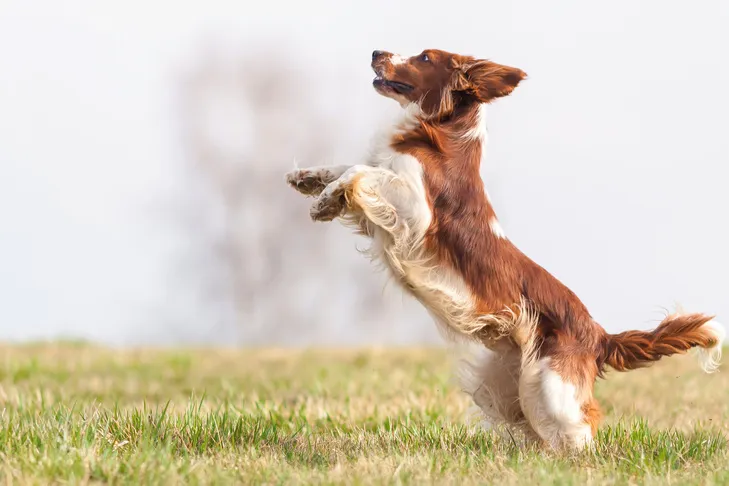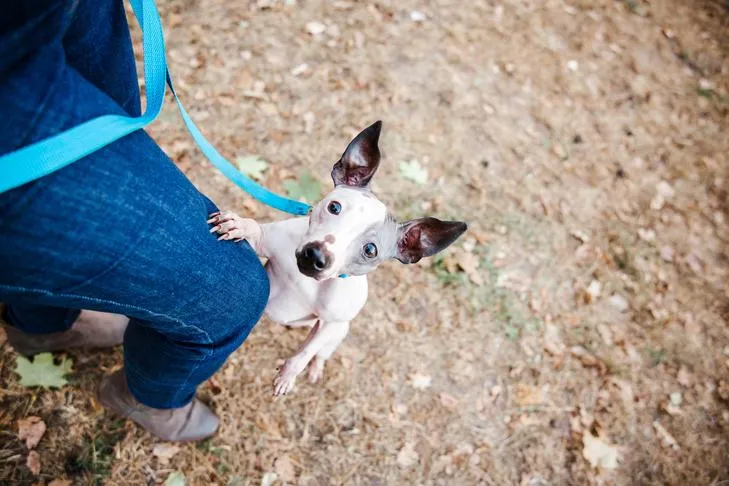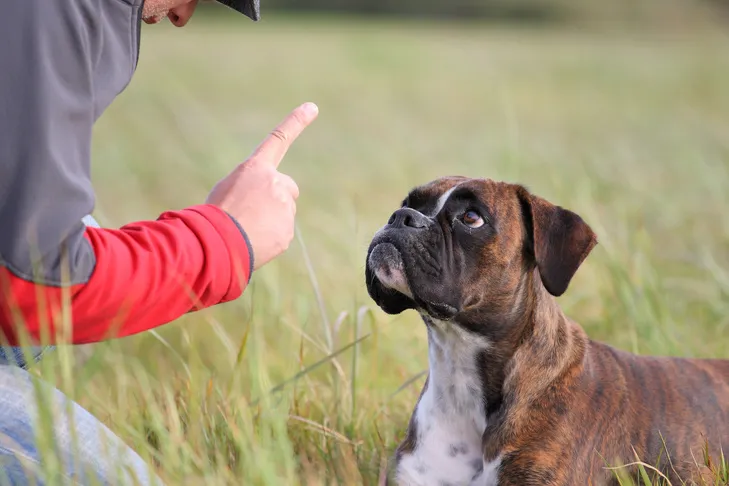Jumping up is a common behavior problem in dogs, especially puppies, and while it might seem endearing at first, it can quickly become an unwelcome habit. Whether your furry friend is a large breed that could knock someone over or a smaller companion that leaves muddy paw prints, the intention behind the jump is usually a joyful “hello.” Your puppy is simply trying to greet you face-to-face and has learned that jumping is an effective way to get your attention. Understanding this natural canine behavior is the first step in learning how to teach a puppy to stop jumping up and develop better manners.
The key to resolving this issue lies in teaching your puppy an alternative, more polite greeting rule, such as “keep your front paws on the floor.” This approach is not only safer but also provides your pet with a clear way to welcome you home and earn your attention appropriately. With consistent effort and the right techniques, you can guide your puppy towards knowing exactly how to say “hi” to humans without resorting to jumping. This article will provide you with practical tips to help your puppy master appropriate greeting behavior.
1. Only Reward When Your Puppy’s Paws Are on the Floor
The most effective strategy to address unwanted behaviors like jumping is to teach an incompatible alternative. Puppies learn faster when you show them what to do rather than just what not to do. For jumping, this means teaching your puppy to keep all four paws on the floor. They cannot jump and stand simultaneously. You might also choose to teach them to sit or lie down for greetings. Whatever your chosen rule, only provide attention and greet your puppy when they are following it. Consistency is crucial; do not allow jumping in some situations (e.g., when you’re in casual clothes) and not others (e.g., when you’re dressed up). This clear boundary helps your puppy understand the expected behavior.
2. Give Immediate Attention for Appropriate Greetings
Dogs repeat behaviors that result in a reward, and your attention is a powerful motivator. As soon as your puppy’s front feet touch the floor and they are following your greeting rule, immediately offer praise and petting. Your puppy craves your attention, so ensure they receive it without delay whenever they exhibit the desired behavior, especially during the learning phase. Avoid postponing your greeting while you take off your coat or shoes; your puppy might become impatient and try less desirable methods to get you to notice them. Prompt positive reinforcement is essential for them to associate “four on the floor” with receiving your affection.
3. Remove Attention When Your Puppy Jumps
Conversely, the only way to stop jumping is to stop inadvertently rewarding it. Never reinforce a behavior you wish to eliminate. If your puppy jumps on you, swiftly remove what they seek most: your attention. This can be as simple as calmly turning your back or walking away. Your puppy will quickly learn that jumping achieves the opposite effect of what they intended. The moment your puppy returns to having all four paws on the floor, turn back, and quietly praise and pet them. This consistent on-and-off of your attention will help your puppy understand that their behavior directly controls your engagement.
 Welsh Springer Spaniel puppy enthusiastically jumping up on a person outdoors, illustrating unwanted greeting behavior.
Welsh Springer Spaniel puppy enthusiastically jumping up on a person outdoors, illustrating unwanted greeting behavior.
4. Set Your Puppy Up for Success with Distraction
While ignoring jumping and rewarding proper greetings is effective, it can be frustrating for your puppy due to the trial-and-error nature of the learning process. You can accelerate their learning by proactively making it easier for them to follow your greeting rule. If your rule is to sit for greetings, immediately ask them to sit the moment you enter the door. If you require four paws on the floor, encourage them to stay standing. One excellent method to prevent jumping is to scatter treats on the floor. Most puppies can’t resist free goodies, and they cannot jump while sniffing and eating from the ground. Be quick; if you provide food before your puppy even considers jumping, you’ll reward the “four on the floor” behavior with both attention and treats. Your puppy will quickly grasp your greeting rule, and you can gradually phase out the food rewards.
5. Always Reinforce Proper Greeting Behavior
Your puppy will learn appropriate greeting behavior faster and more effectively if their actions consistently and immediately impact your attention. “Front feet on the floor” should reliably earn attention, while “jumping” should make it disappear. This means you must always reward your puppy when they follow your greeting rule. Never withhold your attention when your puppy’s feet finally touch the floor, even if you are irritated after a period of persistent jumping. Inconsistency will confuse your puppy and hinder their learning process. A clear and predictable response from you is vital for them to understand what is expected.
6. Avoid Physical Reprimands Like Grabbing or Pushing
Remember that your puppy is jumping to gain your attention. Any physical interaction, even a negative one like grabbing their paws, holding them back, or pushing them away, still counts as attention and, therefore, inadvertently rewards the jumping behavior. Instead of reducing the frequency of jumping, such responses can, in the long run, actually increase it. Worse, for many puppies, getting physical can be misinterpreted as an invitation to engage in roughhouse play, leading them to jump harder and stronger, believing it’s all part of a fun game. This can also damage the bond of trust you are building with your puppy.
 An American Hairless Terrier puppy jumping up on its owner's leg outdoors, demonstrating a common greeting challenge.
An American Hairless Terrier puppy jumping up on its owner's leg outdoors, demonstrating a common greeting challenge.
7. Do Not Use the Knee-Up Technique
You might have heard the advice to raise your knee to block your puppy’s chest when they jump. However, this technique, much like grabbing or pushing, can be misinterpreted as attention or a wrestling game by more boisterous personalities, leading to the opposite of the desired effect. More significantly, for most puppies, it can create distrust and erode the crucial human-canine bond. Your puppy is simply trying to say “hello,” and being met with a painful or uncomfortable block can be confusing and punishing, potentially even causing injury. A puppy who doesn’t trust you might develop other behavioral issues, such as not coming when called, impacting their ability to how old to train puppy on leash and follow other commands.
8. Keep Greetings Calm and Low-Key During Training
Because your puppy is so overjoyed to see you, controlling their excitement can be challenging. It requires a significant amount of emotional self-control for them to resist the natural urge to jump and instead follow a new greeting rule. You can make this easier for your puppy by keeping greetings calm and low-key. Puppies are highly attuned to our emotions; if you are overly excited, they will likely become equally excitable. Instead, maintain a calm and quiet demeanor, even when offering praise. As your puppy begins to understand and comply, you can gradually increase your enthusiasm until you can match their joy without encouraging jumping.
9. Prevent Your Puppy from Jumping on Guests
You are not the only one who can accidentally reinforce your puppy’s jumping behavior. Other family members, visitors, and even strangers encountered on walks can all contribute to the problem if precautions aren’t taken. To prevent this, employ management techniques such as keeping your puppy on a leash so they cannot directly approach people. A more effective strategy is to send your dog to their place, such as a mat or bed, or place them in their crate when guests arrive. Using a baby gate to block the front hall can also create a physical barrier, ensuring your puppy is nowhere near the door during initial greetings.
 A man gently training a Boxer puppy to lie down outdoors, emphasizing calm and focused learning.
A man gently training a Boxer puppy to lie down outdoors, emphasizing calm and focused learning.
10. Instruct Guests and Strangers on Your Greeting Rule
Do not hesitate to clearly communicate your puppy’s greeting rules to guests and even polite strangers. While your puppy is still learning, ask people to completely ignore your puppy unless you explicitly give permission. It’s often best to avoid interactions with strangers until your puppy has reliably mastered polite greetings with friends and family members who you know will cooperate with your training methods. When encountering strangers, you can use a “watch me” cue or distract your puppy with a hand touch or a favorite toy until the person has passed. This proactive management helps reinforce the desired behavior and prevents setbacks in your training. Successfully teaching your puppy good manners around others also contributes to their overall ability to how to train a puppy to be alone when necessary, fostering a well-adjusted companion.
Conclusion
Teaching your puppy to stop jumping requires patience, consistency, and a clear understanding of canine behavior. By focusing on rewarding appropriate “four on the floor” greetings, removing attention for jumping, and proactively managing interactions with others, you can effectively guide your puppy toward more polite and enjoyable interactions. Remember to avoid physical reprimands and keep greetings calm, especially during the learning phase. A well-trained puppy is a joy to be around, and by implementing these tips, you’ll foster a stronger bond and ensure your furry friend becomes a well-mannered companion. If you encounter persistent challenges or require further expert guidance, consider consulting with a professional dog trainer to refine your approach.
